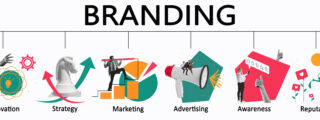
Do Your Patients Have Digital Eye Strain?
The numbers paint the picture of our highly digital nation—an incredible nine out of ten adults (over 93%) spend more than two hours a day using digital devices, from smartphones and tablets to computers and e-readers, according to The Vision Council’s 2015 Digital Eye Strain report.
In addition, more than 60% of adults spend five or more hours on digital devices each day. All of these hours are racking up to propel digital device users into the wide-sweeping phenomenon called Digital Eye Strain. This condition is the physical discomfort—including dry, itchy or burning eyes—felt after two or more hours in front of a digital screen that’s in close to mid-range.
Tip: Use the many tools at your fingertips to help patients cope with digital eyestrain—special blue-light-filtering digital lenses, AR coating, and computer eyewear.
Do you address digital eyestrain with your patients and customers? There’s good reason to help them sooner rather than later. A 2014 study found that office workers who spend a plethora of their time in front of a computer screen can experience changes in tear fluid similar to people with dry eye disease, creating a physiological change.
There are many tools at your fingertips to help patients cope with digital eyestrain. Special digital lenses and lens treatments both help to prevent visual fatigue and limit the amount of digitally produced, straining blue light that penetrates the eyes.
Anti-reflective (AR) coatings also decrease reflection from overhead lighting to deliver enhanced acuity and contrast. An effective, digital eye strain-busting package is delivered when AR is paired with lenses that boast blue light-blocking capabilities.
Lenses that block blue light are either infused with melanin or are engineered to filter a specific range of blue light that can enter the cornea and reach the back of the eye. Specially designed computer eyewear is another option for addressing digital eyestrain—this eyewear utilizes different filters and lenses to serve up visual comfort, sharper focus, and reduced blurriness that can cause fatigue.
Check out The Vision Council’s 2015 Digital Eye Strain report here for more ideas and information.
How do you address digital eyestrain with your patients?
Join the conversation on this vision-saving + business-building topic on our Facebook page here.
Comments are closed.







